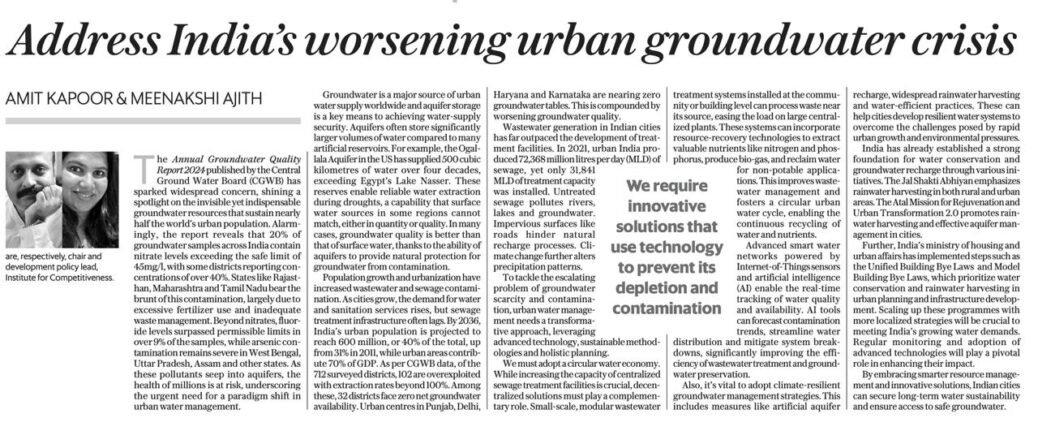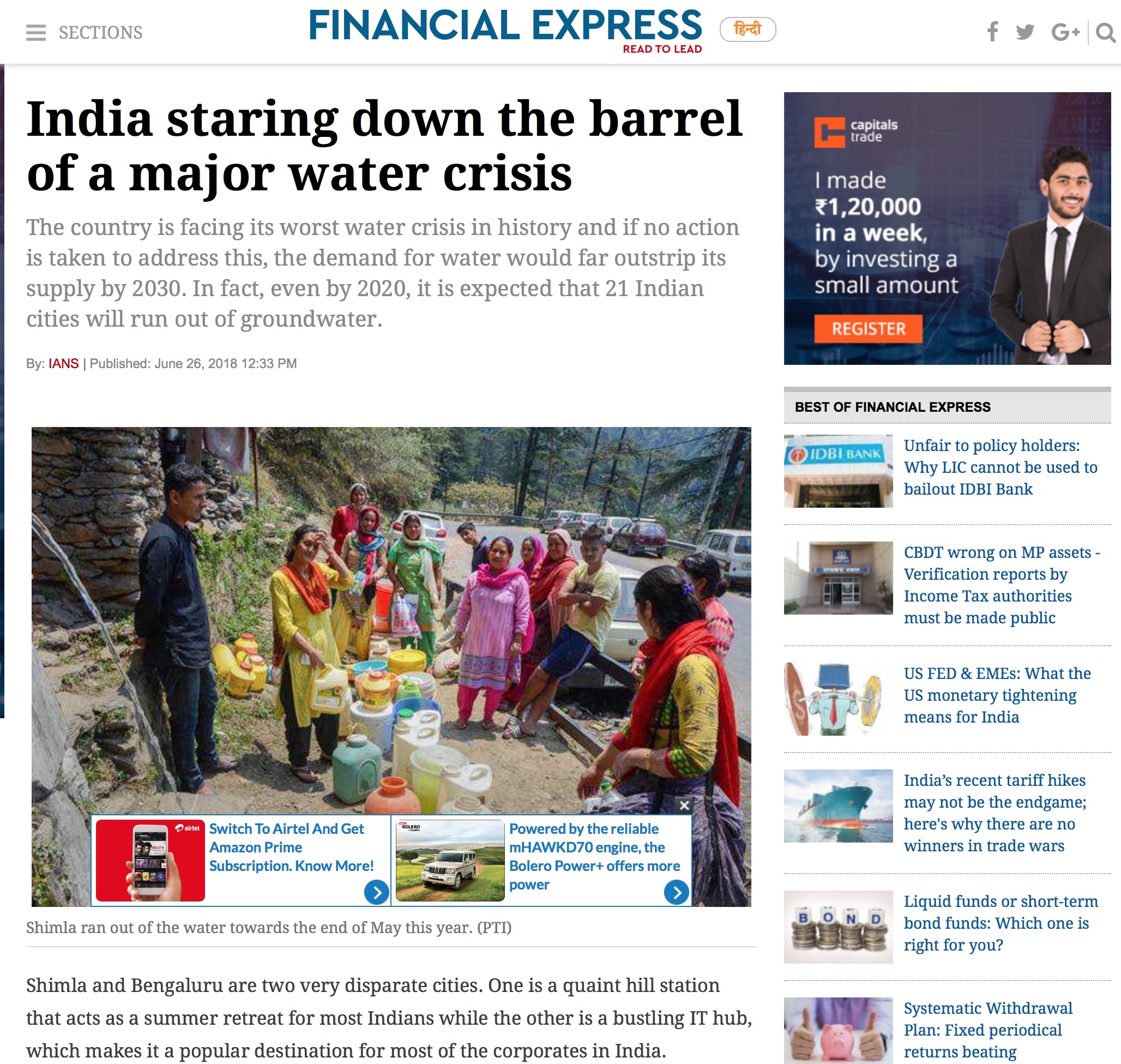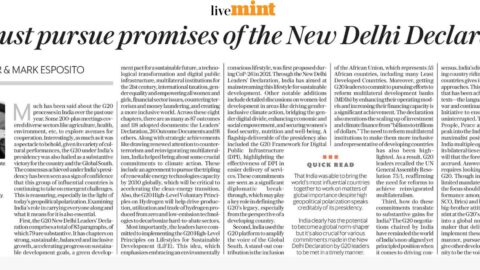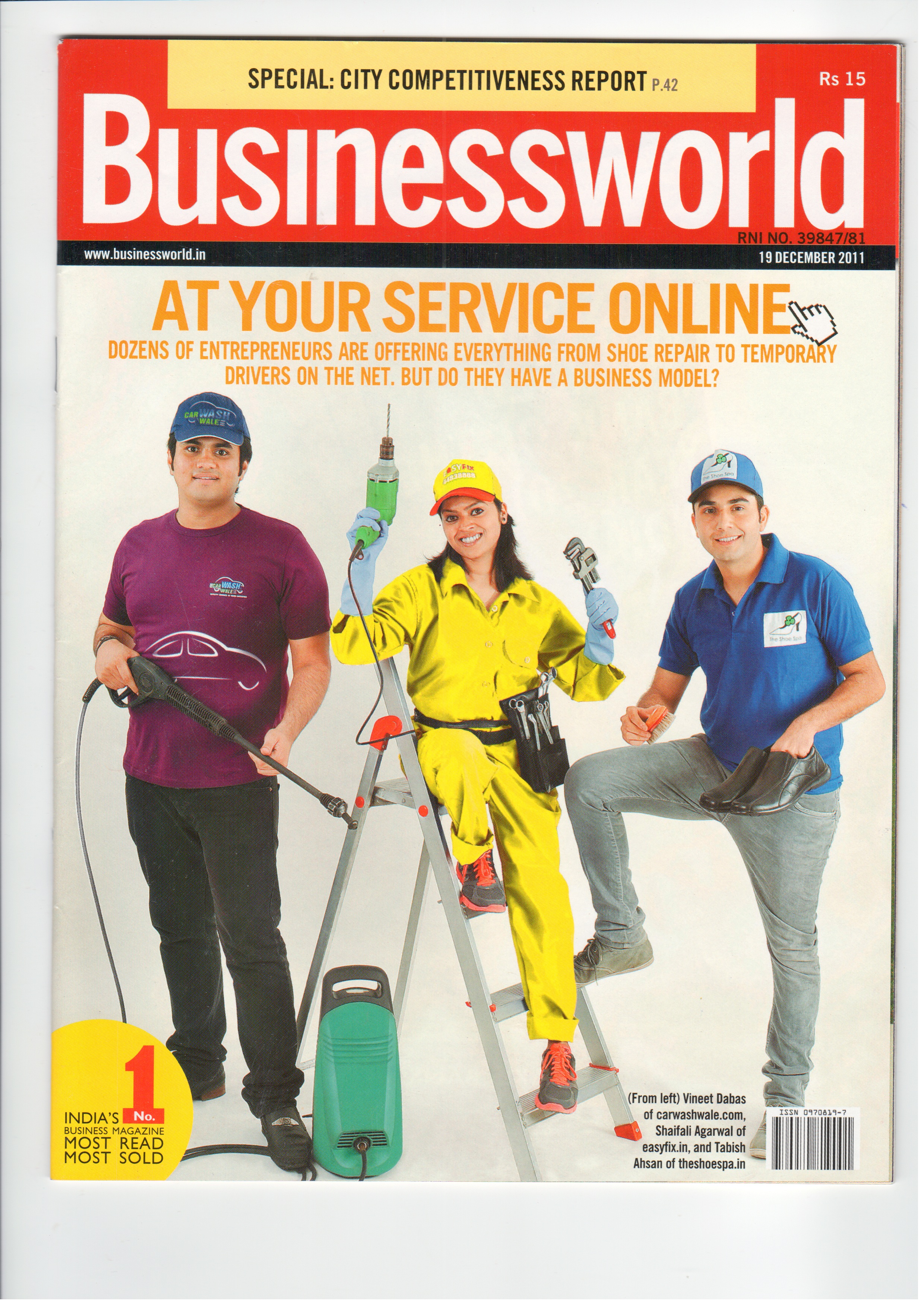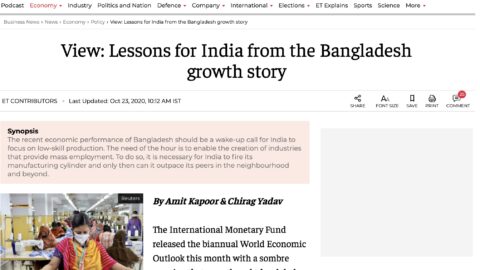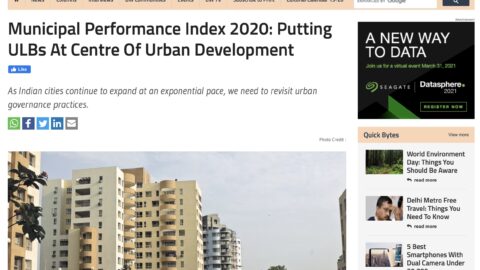By Amit Kapoor and Meenakshi Ajith
From Contamination to Restoration: Addressing Urban Groundwater Pollution
The recently published Annual Groundwater Quality Report 2024 by the Central Ground Water Board has sparked widespread concern, shining a spotlight on the invisible yet indispensable groundwater resources that sustain nearly half of the world’s urban population. Alarmingly, the report reveals that 20% of groundwater samples across India contain nitrate levels exceeding the safe limit of 45 mg/l, with some districts reporting concentrations over 40%. States like Rajasthan, Maharashtra, and Tamil Nadu bear the brunt of this contamination, largely due to excessive fertilizer use and inadequate waste management. Beyond nitrates, fluoride levels surpassed permissible limits in 9.04% of samples, while arsenic contamination remains severe in states such as West Bengal, Uttar Pradesh, and Assam. As these pollutants seep into aquifers, the health of millions is at risk, emphasizing the urgent need for a paradigm shift in urban water management.
Groundwater is a major source of urban water supply worldwide and aquifer storage represents a key resource for achieving water-supply security. Groundwater reserves often surpass artificial reservoirs in capacity. For example, the Ogallala Aquifer in the U.S. supplied 500 cubic kilometers of water over four decades, exceeding Egypt’s Lake Nasser. Groundwater offers reliable drought resilience and, in many cases, better quality than surface water due to natural aquifer protection against contamination.
Population growth and urbanization have increased wastewater and sewage contamination, with high nitrate levels threatening groundwater quality. As cities grow, the demand for water and sanitation services rises, but sewage treatment infrastructure often lags. By 2036, India’s urban population is projected to reach 600 million (40% of the total), up from 31% in 2011, while urban areas contribute 70% of the national GDP. Groundwater, the backbone of urban life, remains a neglected issue—silent but critical. As per CGWB data, of the 712 surveyed districts, 102 are overexploited with extraction rates exceeding 100%. Among these, 32 districts face zero net groundwater availability for future use. Urban centres in Punjab, Delhi, Haryana, and Karnataka—such as Ludhiana, Shahdara, Bengaluru (Urban), Gurugram, and Karnal—are nearing zero groundwater tables. Overexploitation remains a major concern, now compounded by deteriorating groundwater quality.
Wastewater generation in Indian cities have far outpaced the development of treatment facilities. Back in 2021 itself, urban India produced 72,368 million litres per day (MLD) of sewage, yet only 31,841 MLD of treatment capacity was installed, with operational facilities handling just 26,869 MLD. This left 72% of urban sewage untreated, polluting rivers, lakes, and groundwater. Impervious surfaces such as roads and buildings block natural recharge, preventing aquifers from diluting contaminants. Climate change further complicates the situation by altering precipitation patterns, worsening groundwater depletion and pollution. These factors together threaten the availability of safe drinking water for growing urban populations.
To tackle the escalating issue if groundwater scarcity and contamination, urban water management in Indian cities needs a transformative approach leveraging advanced technology and holistic planning. Adopting a circular water economy is essential. While increasing the capacity of centralized sewage treatment facilities remains crucial, decentralized solutions must also play a complementary role. Small-scale, modular wastewater treatment systems installed at the community or building level can process waste near its source, easing the load on large, centralized plants. These systems can incorporate resource recovery technologies to extract valuable nutrients like nitrogen and phosphorus, produce biogas, and reclaim water for non-portable applications. This not only improves wastewater management but also fosters a circular urban water cycle, enabling the continuous recycling of water and nutrients.
Advanced smart water networks, powered by IoT sensors and artificial intelligence (AI), enable real-time tracking of water quality and availability. AI tools can forecast contamination trends, streamline water distribution, and mitigate system breakdowns, significantly improving the efficiency of wastewater treatment and groundwater preservation. As climate change alters rainfall patterns, adopting climate-resilient groundwater management strategies becomes increasingly vital. This includes measures like artificial aquifer recharge, widespread rainwater harvesting, and the adoption of water-efficient practices. By implementing these strategies, cities can develop resilient and adaptive water systems capable of meeting the challenges posed by rapid urban growth and environmental pressures.
India has already established a strong foundation for water conservation and groundwater recharge through various initiatives. The Jal Shakti Abhiyan (JSA), introduced in 2019, emphasizes rainwater harvesting in both rural and urban areas. Similarly, the Atal Mission for Rejuvenation and Urban Transformation (AMRUT) 2.0 promotes rainwater harvesting and effective aquifer management in cities. To further these efforts, the Ministry of Housing and Urban Affairs has implemented measures such as the Unified Building Bye Laws (UBBL) and Model Building Bye Laws (MBBL), which prioritize water conservation and encourage rainwater harvesting in urban planning and infrastructure development. Scaling up and refining these programs with more localized and adaptable strategies will be crucial to meeting India’s growing water demands. Regular monitoring, coupled with the adoption of advanced technologies, will play a pivotal role in enhancing the impact of these water management initiatives. By embracing smarter resource management and innovative solutions, Indian cities can secure long-term water sustainability and ensure access to safe groundwater in the face of rapid urbanization and environmental challenges.
The article was published with Mint on January 22, 2025.

